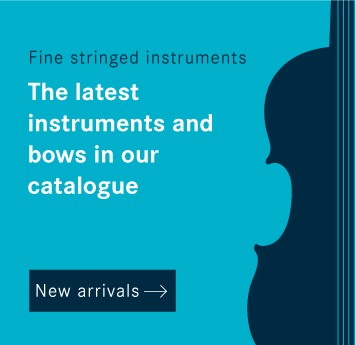The Baroque violin bow as part of a musical revolution: violin making, music and bow making in the 17th and 18th century.
The development of the Baroque violin bow is a story of attempts and errors, an interplay of craftsmanship and music during the course of which widely varied models were designed, modified and improved. When the baroque violin was invented in the late 16th century, the art of creating stringed instruments reached a zenith that triggered a musical revolution. The violin's predecessors were predominantly used to keep time on the dance floors of weddings and festivals, but this newer form of the instrument quickly liberated itself from its disdained origins. At first, however, the early masters of violin making paid no thought to the issue of a proper bow, so people continued to play using the fiddle and rebec bows of the late middle ages. Many of these bows were very clearly designed as rhythm instruments. Some of them were only 20 to 30 cm (8-12 inches) and had a strong convex curve; their length was further restricted by the player using an underhand or closed-fist grip.
Content overview:
- The musical reasons that explain the evolution of the Baroque bow
- Design elements of the Baroque bow
- The joys of aesthetics: The diversity of materials and shapes in the Baroque bow
The musical reasons that explain the evolution of the Baroque bow
At first, French Baroque music in particular stayed close to the styles in the canon of dance music, so it had little reason to re-examine how the bow was used and constructed. In Italy, however, there was vivid interest in cantabile playing.  People there preferred the overhand grip, which opened doors to new sounds and ways of playing the violin: the “Italian” grip (as opposed to the “French” underhand grip) allowed the player to bow with greater sensitivity and modify the sound. Legato and spiccato techniques became more widespread as music grew more soloistic in nature, and longer violin bows meant that longer tones and sequences were now possible. By composing pieces which relied on the long Baroque violin bow,
People there preferred the overhand grip, which opened doors to new sounds and ways of playing the violin: the “Italian” grip (as opposed to the “French” underhand grip) allowed the player to bow with greater sensitivity and modify the sound. Legato and spiccato techniques became more widespread as music grew more soloistic in nature, and longer violin bows meant that longer tones and sequences were now possible. By composing pieces which relied on the long Baroque violin bow,
Design elements of the Baroque bow
Arcangelo Corelli (1653-1713) made fundamental changes to the character of the violin; its aural ideal came to resemble that of singing more and more. The introduction of a longer violin bow triggered a series of changes in construction, especially an increase in the height of the head so as to achieve a more even distribution of weight and playability along the full length of the bow. Baroque bows with less of an arch gradually became more popular until eventually the straight to slightly concave line evolved. Players once determined the pressure of the bow by modifying their grip, e.g. by applying pressure with the thumb, but over time, the detachable frog and "toothpick"-style bows made a greater variety in tension possible, until at last the frog with an eyelet and screw established itself as the standard.
The joys of aesthetics: The diversity of materials and shapes in the Baroque bow
These technical improvements were accompanied by more sophistication in the aesthetic design of the Baroque violin bow. Premium woods, especially the very hard amourette, were processed with great artistry, sticks were fluted, and frogs and heads were shaped into fanciful designs and decorated. No uniform standards emerged on a widespread scale, i.e. in this context one cannot speak of there being a typical model of a Baroque violin bow. What is, however, typical of Baroque-period bows is the diversity of shapes and designs.
Related articles:
Overview: “History of the violin bow”
The Classical violin bow (The violin bow, part II)
F. X. Tourte, founding father of the modern violin bow (History of tge violin bow, part III)
The Baroque violin - more than catgut strings
John Dodd: a legend of oyster shells and silver spoons
J & A Beare (Beare's), London: expertise in changing times





